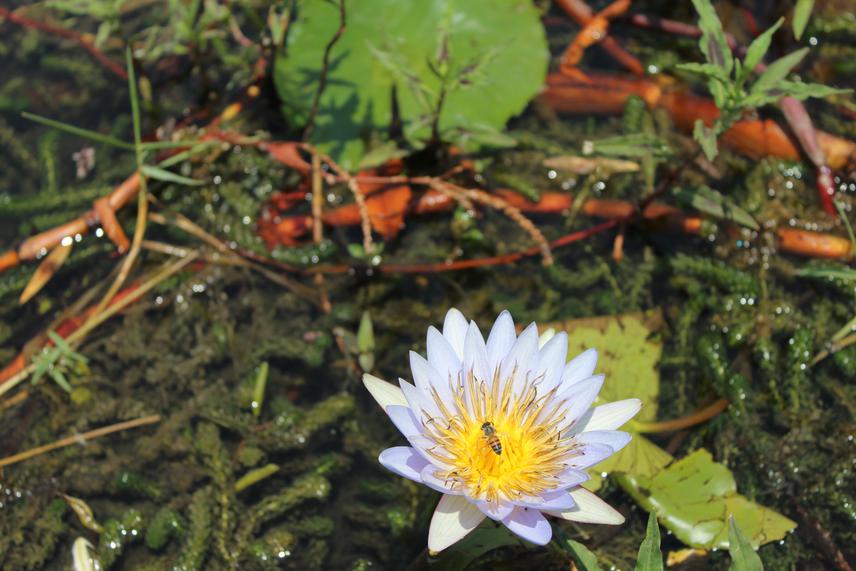Gugulethu Tarakini
Other projects
15 Oct 2018
The Little Known Pollinator Species in Agricultural Intensive Regions of Zimbabwe
This project will utilise social media, and established links with extension workers in campaigns to address melissophobia (fear towards bees) and increase interest in bee conservation among farmers in Zvimba District. Assessments will be conducted on native plants that are important bee forage resources on an annual cycle in this district. Willing farmers will be trained and used to establish pollinator gardens about one acre of land grown with important food plants for bees. One beehive will be installed in each pollinator habitat. Finally, a pollinator handbook will be developed to guide farmers on the establishment of pollinator gardens in communal areas of typical ecosystems.

Honey bee inside a water lily flower.
Land use change is a major threat to pollinators resulting in habitat/forage loss and agriculture is a major driver in developing countries projected to increase a further 47% by the year 2050, with 66% coming from the conversion of forests and wetland habitats (United Nations, 2011a). Specialised pollinators can become extinct due to forage loss and monoculture agro ecosystems offer poor diets to the pollinators. To maintain the diversity of pollinators there is need for restoration of diverse forage resources for pollinators and their habitats. However, from previous observations, negative attitudes driven by melissophobia (fear towards bees) reduce willingness to adopt bee conservation strategies by farmers (Tarakini et al. 2020).
To address these challenges, the project aims at:
1. Addressing melissophobia in the district through outreach programs (Daphne 2011) which use social media as it was shown to be more effective in the previous study (Tarakini et al. 2020). This will be accomplished through videos that will be shared with farmers on Whatsapp, Facebook, TikTok to train the farmers on bee conservation and highlight their importance.
2. Developing pollinator gardens in the district by using native vegetation (herbs, shrubs, and trees) which are more resistant to pests and drought. Each pollinator garden will be planted with a minimum of 15 different flowering plants with the assistance from agricultural extension farmers and forestry commission officers. Plantings will be conducted during the wet season. The whole project is aimed at planting a total of 2500 trees, 5 000 shrubs and more than 5000 herbaceous plants in the district. To improve also the number of honey bee colonies, one bee hive will be installed in each pollinator garden.
Pollinator gardens will act as refuge sites for bee species that cannot tolerate different land-use changes. The pollinator gardens will also offer diverse food resources to bees across seasons as fields turn into resource deserts off the growing season. Tree growth in pollinator gardens will also help in mitigating climate changes as trees are important carbon sinks. These gardens may create micro-climates that buffer negative impacts of changes in climate (i.e., excessive winds, extreme temperatures) to bees. Other pollinators besides bees that have similar ecological requirements are also expected to benefit from these gardens. Installation of beehives will increase honeybee abundance in the district. Increased abundance and diversity of pollinators is expected to ultimately improve crop production in the district as well as wild plant biodiversity.